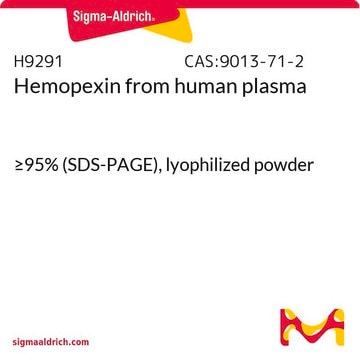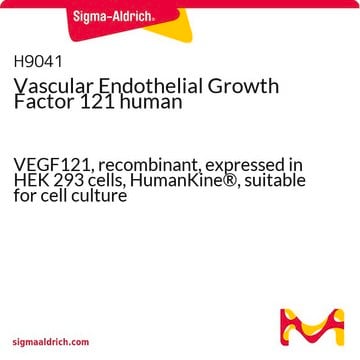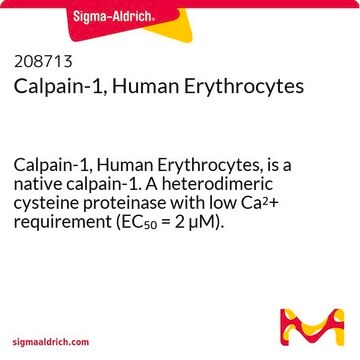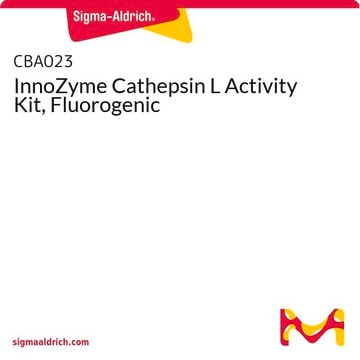SRP6306
Azurocidin Neutrophil (Cationic protein 37) from human neutrophils
≥95% (SDS-PAGE)
Synonym(e):
Cationic antimicrobial protein CAP37, Heparin-binding protein
Anmeldenzur Ansicht organisationsspezifischer und vertraglich vereinbarter Preise
Alle Fotos(1)
About This Item
UNSPSC-Code:
12352200
NACRES:
NA.32
Empfohlene Produkte
Allgemeine Beschreibung
The gene for azurocidin is located on the short arm of chromosome 19 and is in a cluster with the genes for proteinase 3 and elastase. All three proteins are serine protease homologues; azurocidin, however, lacks enzymatic activity. It is an antibiotic protein, with monocyte chemotactic and antibacterial activity. The Azurophil granules, specialized lysosomes of the neutrophil, contain at least 10 proteins implicated in the killing of microorganisms. Azurocidin is a member of the serine protease family that includes Cathepsin G, Neutrophil Elastase (NE), and Proteinase 3 (PR3), however, Azurocidin is not a serine proteinase since the active site serine and histidine residues are replaced. Azurocidin has been identified as a modulator of endothelial permeability and an important multifunctional inflammatory mediator. Neutrophils arriving first at sites of inflammation release Azurocidin which acts in a paracrine fashion on endothelial cells causing the development of intercellular gaps and allowing leukocyte extravasation. Azurocidin thus be regarded as a reasonable therapeutic target for a variety of inflammatory disease conditions.
Physikalische Form
Salt-free lyophilized solid.
Rekonstituierung
Use deionized water
Lagerklassenschlüssel
13 - Non Combustible Solids
WGK
WGK 3
Flammpunkt (°F)
Not applicable
Flammpunkt (°C)
Not applicable
Analysenzertifikate (COA)
Suchen Sie nach Analysenzertifikate (COA), indem Sie die Lot-/Chargennummer des Produkts eingeben. Lot- und Chargennummern sind auf dem Produktetikett hinter den Wörtern ‘Lot’ oder ‘Batch’ (Lot oder Charge) zu finden.
Besitzen Sie dieses Produkt bereits?
In der Dokumentenbibliothek finden Sie die Dokumentation zu den Produkten, die Sie kürzlich erworben haben.
Unser Team von Wissenschaftlern verfügt über Erfahrung in allen Forschungsbereichen einschließlich Life Science, Materialwissenschaften, chemischer Synthese, Chromatographie, Analytik und vielen mehr..
Setzen Sie sich mit dem technischen Dienst in Verbindung.








